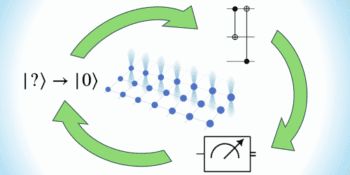Crystalline materials can deform at supersonic speeds without fracturing according to two physicists at the Max-Planck Institute for Metal Research in Stuttgart, Germany. Previously it was thought that materials would crack if deformed at speeds faster than the speed of sound. Peter Gumbsch and Huajian Gao discovered 'supersonic plasticity' by simulating the movement of shear waves through a strip of tungsten. They found that the higher the strain, the faster the wave of deformation travels through the crystal (Science 283 965).
Gumbsch and Gao also found that the supersonic speeds only occur when the stress is applied at a single point. At very low strains, the deformations travel subsonically. At intermediate strains, however, they start supersonically but quickly drop below the sound barrier. But if higher strains are applied, stable supersonic deformation occurs, causing a ‘shock cone’ to ripple throughout the material. Gumbsch and Gao now hope to model these effects on geological features such as tectonic shear faults.



